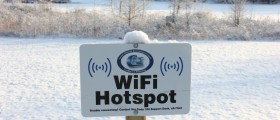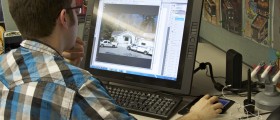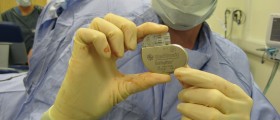
People with disabilities often need special devices which help them overcome problems they encounter during everyday life. A vast majority of these assistive devices exist, making lives of disabled people much easier.
In general, the term assistive technology encompasses different forms of assistive, adaptive and rehabilitative devices, along with the helpful resources regarding the use, obtaining and selecting these. Many human creations we use daily are not fully compatible with people who have certain disabilities. However, with assistive devices and technology, disabled people can successfully overcome these problems and live lives just as everybody else.
What is Assistive Technology?
The main goal of all that assistive technology stands for is modifying the general design of the world we create, in order to make it more usable and perfectly accessible for people with disabilities. For example, the curb cuts allow people in wheelchairs or other forms of such transportation to safely and effectively get off the sidewalk and cross the street, just like everyone else. Moreover, these modifications are beneficial for all other people too since individuals with shopping carts, bicycles and other wheeled items can use the curb cut in order to leave the sidewalk too.
Assistive technology also works on increasing the availability and usability of modern mobile phones for people who are completely deaf of suffering from a certain level of hearing impairment. The phones made for these people focus on texting. Furthermore, these devices are capable of pronouncing the typed text, transferring the tones to the person on the other line, as if the deaf person was actually speaking.
Some people may not be able to use their fingers in order to operate devices such as computers, cell phones or even calculators. Assistive technology provides devices which can be voice operated, allowing those who cannot use them otherwise enjoy these useful pieces of technology.
Of course, in today's modern world, not many people can imagine a day without computers. Unfortunately, for some people with physical impairments, using regular computers may be impossible. Assistive technologies are working on surpassing this obstacle by developing voice-recognition software or devices which allow blind or deaf people to use the computer without problems.
Finally, even though we might not be aware of it, the majority of toys we create are not suitable for people with disabilities. So, assistive technology devices may also encompass toys which can be used and enjoyed by children and adults with physical impairments.
Assistive Technologies and Universal Accessibility Issues
As it was mentioned above, this world needs to be made more compatible with people who have certain disabilities. Assistive technology devices take us a step closer to this solution, helping these people surpass many problems they encounter in the world.
Moving on with examples, for people suffering from dementia or some other health problems which go hand-in-hand with old age, there are assistive devices such as sensors which can notice falls or emergency situations, being installed in homes, contacting emergency services whenever something goes wrong.
Thermometers, flooding and unlit gas sensors and many other technological breakthroughs of this type can keep people suffering from dementia safe, contacting their caregivers as soon as a potential problem occurs.
Whenever assistive technology devices are created, people with disabilities are involved in the process. Taking into consideration that these devices are made to suit them completely, these people play a vital part in the genesis of assistive products. These people are asked questions about their possible ideas regarding overcoming their disabilities and any ideas are crucial for the further development of new devices.
For example, a person suffering from dementia might be asked to think of the best possible way of being reminded of gas being left leaking. Once people involved in creating assistive technology devices gather the answers, they categorize them and take them into consideration.
Speaking about the software which can be used in order to help people use technology devices better, there are thousands of different programs and interfaces made for these purposes. Some types of software may improve the hand-eye coordination of disabled people or help with mind mapping, transferring text to speech, diagnosing specific conditions, studying, adjusting hardware to one's vision etc.
All the helpful software of this type may be implemented in devices such as portable music players, tablet computers, ATMs, television and many others.
According to information obtained from a survey carried out between 1994 and 1997 by the National Center for Health Statistics, 8.3 million American citizens needed assistive technology devices in order to perform regular daily activities like showering, getting in and out of bed, eating and preparing food etc.
Furthermore, 15.4 million disabled people were already using assistive devices or technologies, from glucose monitors, over hearing aids, crutches and inhalers, to feeding tubes and catheters while 7.4 million had surgically inserted implants which improved their health conditions.
All in all, in general, a vast majority of disabled people need more assistive technology devices in their homes and lives per se. Therefore, these devices are very useful and make a tremendous positive effect on the lives of disabled people, allowing them to live lives just like every other, healthy, person in this world.

















Your thoughts on this
Loading...